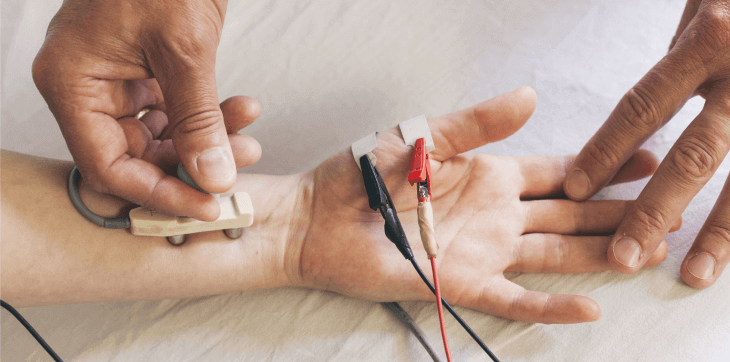
An electromyogram (EMG) is done to detect problems with a child’s muscles. A nerve conduction velocity (NCV) study is done to detect a problem with a nerve. An EMG and NCV are often done together to determine if a child has a muscle disorder or a nerve disorder. These procedures help to detect diseases that damage the nerves and muscles.
An EMG will measure the electrical activity of muscle while it is at rest, slightly contracted and fully contracted. One or more small needles are inserted through the skin into the muscle. The electrical activity picked up by the needles is then displayed on a monitor that shows electrical activity in the form of waves. An audio-amplifier is used so the activity can be heard.
After all of the electrodes have been inserted, your child may be asked to contract the muscle, for example, by lifting or bending his or her leg. The size and shape of the wave that this creates on the monitor shows how well the muscle responds to stimulation. As the muscle is contracted more forcefully, more and more muscle fibers are activated, producing more waves.
An abnormal EMG result may be a sign of a muscle disorder such as muscular dystrophy or a nerve disorder such as sensorimotor polyneuropathy or spinal cord problems.
During an NCV study, small electrical currents are delivered to the arm or leg. The amount of response the nerve has and the speed of the current traveling down the nerve are measured. NCV can determine nerve damage and is often used to evaluate neuromuscular diseases, motor problems, nerve compression or injury, nerve root injuries and muscle degeneration.
Ten or more needle insertions may be necessary for these tests. Your child may experience slight pain, but our technologists are adept at helping them through the process. Some muscle soreness may linger for a day or so after the test.